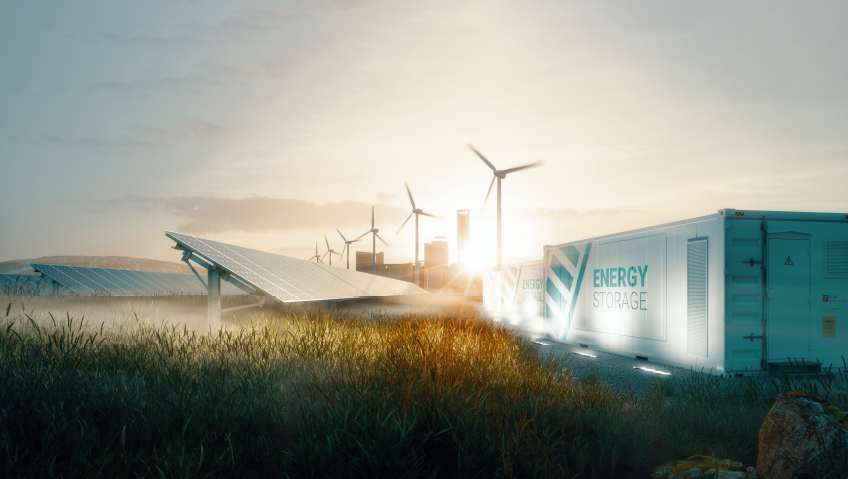With energy storage requirements changing quickly around the world, researchers are continuously looking to create effective, long-lasting, and truly innovative solutions. Everything from grid storage at the large scale to the smallest of electronic devices has seen an increased demand for more capacity, longer run-times, better reusability, and higher safety ratings.
To maintain reliable and cost-effective power system operations, the energy storage industry is now concentrating on increasing energy consumption capacity through three general categories: steering clear of conventional lithium-ion batteries in favour of cutting-edge battery chemistries that provide higher stability, densities, and shelf lives; constructing storage systems that can effectively store intermittent renewable energy and scale it up to supply vast geographic areas with electricity; and converting from centralized to a decentralized, more adaptable form of energy storage.
The world is experiencing an energy crisis and companies all over the globe are competing to develop energy storage solutions that are effective, sustainable, and safe. In 2020, the market for energy storage was estimated to be worth $188.5 billion—by 2030, it’s anticipated to reach $435.5 billion, expanding at a CAGR of 8.3 percent, according to a 2022 report from BloombergNEF.
Some of the more interesting solutions rely on Gravity Energy Storage (GES), and they make use of potential energy of large masses to store and then recover energy. There is some conversion loss going from electrical to mechanical energy (and back again when this storage system returns that energy), but GES systems have a very low impact on the environment, a high energy density, and a very long operating life. Although GES systems necessitate a large investment in land and infrastructure, they are reliable and relatively affordable options for long-term storage.
The Energy Vault in Switzerland, which makes use of a tower built of concrete blocks raised by six electric cranes, is perhaps one of the best examples of GES methods. The cranes lift the blocks to store potential energy when supply on the grid is high, then lower the blocks when energy is needed, recovering most of the energy that was used to lift them. Pumped hydro systems represent another application of the same principle; when there is extra energy available, water is pumped to a higher elevation, storing potential energy. The water is allowed to flow back down when energy is needed and energy is extracted from that process. While there are some losses, GES systems generally boast an efficiency rate of between 80 and 90 percent.
GES has a high energy density; it has the potential to store a lot of energy in a small area. These systems are also ideal for long-term storage since the gravitational potential energy suffers no losses once a mass is lifted. And since these systems are literally as simple as lifting and lowering mass, they can run continuously and have minimal environmental impact—certainly a desirable alternative to conventional chemical batteries for many power plant operators.
Lithium-ion batteries—though they offer high mobility, quick recharging, little maintenance, and versatility—are becoming less desirable, as they require overcharge or total discharge protection, are exceedingly combustible, are sensitive to high temperatures, and deteriorate with age. Moreover, mining the materials needed for battery production has significant environmental consequences.
Before we go giving up entirely on lithium, however, some companies are looking at advancements with other elements interacting within lithium-ion batteries to improve functionality and lifespan. By replacing conventional lithium-cobalt electrodes with lighter and more energy-dense materials including lithium-polymer, lithium-air, lithium-titanate, and lithium-sulfur, we might be able to significantly increase the reusability of lithium, reducing the environmental impact.
But, as conventional lithium batteries are falling out of favour, the next generation of battery storage might need to rely on other materials. What alternatives are being investigated? Zinc is one possibility, and given its large supply, innate stability, and low toxicity, zinc-air batteries could be a practical substitute for lithium. Batteries made of sodium-sulfur are another effective option as they’re made of very affordable materials with longer lifespans, more charge / discharge cycles, and high energy density. Other promising battery chemistries include silicon-based batteries, nickel-zinc batteries, aluminum-ion batteries, and magnesium-ion batteries—all of which show great promise but need further development and testing.
The capacity of today’s battery technologies to deliver great power density for shorter time fractions (Short Duration Energy Storage, or SDES) is being fully utilized with supercapacitors, flywheels, and superconducting magnetic storage, examples of long-established technologies. The quality and dependability of the electrical grid are improved even if they dissipate quickly at transient times after system disturbances, load changes, and line switching, and also stop voltage instability from causing electrical systems to collapse. Additionally, several firms incorporate SDES into fuel cell applications to enhance how quickly electric vehicles charge and discharge. Many cities have experienced increases in overall energy storage and charge cycles as a result of linking their energy storage systems to SDES.
Enhanced redox flow batteries—utilized as rechargeable batteries or fuel cells—are made up of two connected tanks with electrolyte liquids and electrodes that are each negatively and positively charged with ions moving from one tank to the next via a membrane in the devices. Redox flow batteries have a longer lifespan than lithium batteries because the membrane isn’t harmed by the current flowing from one tank to another. They also provide excellent potential for utility-scale integration of renewable energy because of their adaptable system design and simple scalability. Other good news: new redox chemistries that are less expensive and have higher energy densities are being developed thanks to advancements in the sector.
Conventional liquid electrolytes have low charge retention, are inefficient in operation at high temperatures, and are extremely flammable. Solid-state batteries solve these problems by swapping out the flammable liquid electrolyte for a solid substance that promotes ion migration. Start-ups now utilize electrolytes with strong ionic conductivity, such as polymers and organic chemicals. Solid electrolytes also enable the production of batteries using high-voltage, high-capacity materials, resulting in greater energy density, mobility, and shelf life. Solid-state batteries are also the best option for usage in EVs as they have a better power-to-weight ratio.
High proportions of variable renewable electricity output can be affordably balanced by using heat storage, both seasonal and short-term. Adding heat to the storage system as part of the advanced thermal energy storage process will enable heat to be extracted and used later. In the past, heating firms have stored hot or cold water in insulated tanks to utilize when demand for heating and cooling surges. However, recent advancements indicate how heat energy can be stored using novel materials such as phase-changing materials, molten salts, and eutectic materials. Solar thermal systems are where thermal energy storage is most frequently used, which solves the problem of intermittent renewable energy by making it possible to retrieve solar electricity at night that’s been stored during the day.
Energy storage infrastructure construction involves a number of setup fees, and long-term ownership can result in locked-in capital and stranded assets. Businesses can acquire a dependable power supply with zero asset investment and low implementation costs by using energy storage as a service, enabling facilities to assess the worth of a solution for energy storage. Additionally, this strategy provides the most flexibility when market conditions change. Energy storage as a service also helps utilities manage grid infrastructure breakdowns, seasonal peak demand, and traffic congestion while allowing users in outlying areas with spotty or no grid connectivity to profit from improved grid flexibility and effectiveness.
In short, innovative storage solutions result in substantial payoff for society, whether through increased productivity, a healthier environment, or financial savings and gains. Systems for storing energy are necessary for the expansion of renewable energy sources and the decentralization of energy production, and energy storage is positioned to play an increasingly significant role in the shift to a more sustainable and resilient energy system as costs continue to fall and technology advances.













